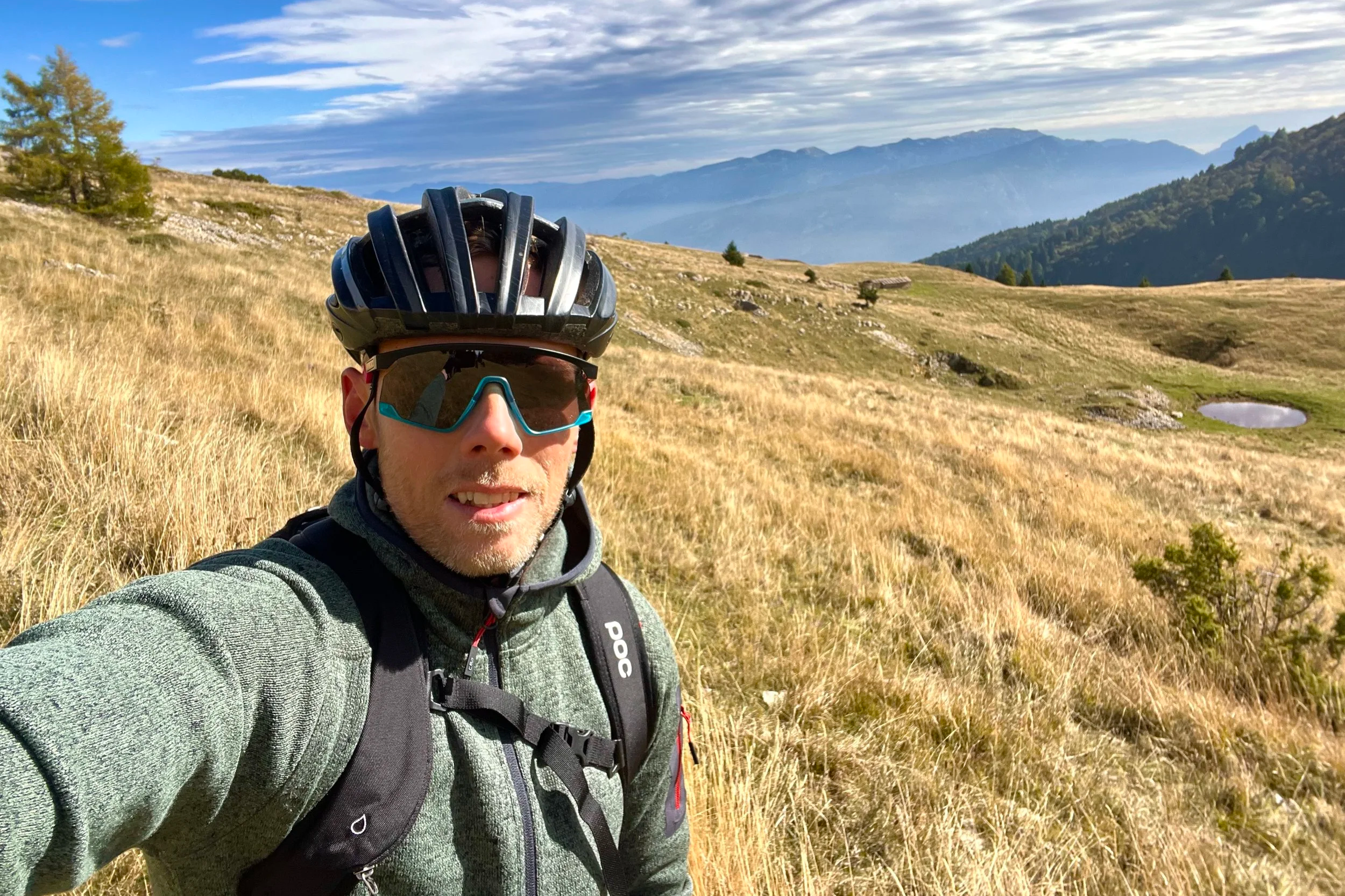Taking Neverempty to Trento (IT) for Some Real Life Action
For any e-MTB rider, there’s a persistent, nagging question that haunts every long ride: "Will I make it back on a single charge?"
We’ve all been there: nervously checking the battery percentage on a long climb, dialling the assist down to "Eco" when you know you still have miles to go, and maybe even feeling that terrifying, soul-crushing moment when the battery finally dies, leaving you to push a 25kg bike up a mountain road.
That constant anxiety isn't part of the fun. It takes your focus off the breathtaking views, the flow of the trail, and the pure joy of the ride.
This is the problem we set out to solve with Neverempty, the smart route-based battery management app for e-MTBs. But an app built behind a desk can only be truly validated one way: in the wild.
So, two weeks ago, I packed my gear, the MVP of the Neverempty app, and headed straight for the heart of European (e)mountain biking: Lake Garda, Italy.
The goal was simple but daunting: confirm the idea, validate the math, and see if Neverempty could truly kill range anxiety on the challenging terrain.
From Theory to Trail: Why we chose Torbole, Lake Garda
Building an app in our native Estonia, where "climb" means a 100m long slight incline, gives you an idea of our limitations. We needed real mountains, real ascents, and real routes that would push a battery to its limit. Torbole, with the towering peaks of Monte Baldo and the sheer drops overlooking Lake Garda, was the perfect proving ground. The north shore of Lake Garda is a hugely popular destination for e-bikers of all kind, so if it works there, it should work anywhere.
The rides we tested were no joke. Over four days, I tackled:
The Monte Velo Trail
The Bocca Fortini Tour
The Challenging Monte Baldo Tour (Twice!)
Each ride averaged between 1300 and 1500 meters of elevation gain, winding through challenging gravel roads, technical singletrack, and stunning woodlands. The autumn air was crisp (around 10−15∘C), and the views were non-stop.
For every single route, the process was the same:
Upload the GPX file of the planned route into the Neverempty app.
Allow the app to calculate the required energy based on the distance, elevation profile, and my initial battery level plus all the riders info.
Connect the app to the e-bike’s control module via Bluetooth.
Hit the trail and let Neverempty take the wheel (or rather, the assist).
The MVP’s Moment of Truth: Automatic Assist
The core feature we went to Italy to test was the automatic assist adjustment.
Before Neverempty, every rider is forced to manually calculate when to use "Eco," "Trail," or "Boost." It’s a constant, distracting mental balancing act especially if you know you’re going to consume a lot of battery.
With the MVP connected, I set my desired battery safety margin, and the app began automatically adjusting the assist level in the more granular 1–7 level mode (my rental bike was equipped with Shimano EP801 and a 720Wh battery).
The Unexpected Revelation
I had tried the app briefly back home, but the difference on a real mountain was night and day. What surprised me the most was how smooth and intuitive the automatic assist felt.
The app did all the thinking—analyzing the current gradient, anticipating the upcoming climb, and instantly dialing in the optimal level of power needed to keep me on pace while ensuring the battery lasted exactly as long as the route demanded.
I could just enjoy the ride (and the views).
On the first Monte Baldo run, I finished with an empty battery (died about 10km too early). On the second run, I adjusted the app's internal settings to be slightly more conservative and at the same time pore precise regarding the start’s and end’s of the climbs. The result? The ride felt even smoother, the power delivery was more subtle, and the battery life extended further, meaning I finished the same route with some % left int the battery. I stopped worrying about running out of battery and started focusing entirely on the ride, the trail, and the breathtaking views. The app moved the entire mental load from my brain to its processor.
What We Learned: The Good, The Bad, and The Beta
Testing an MVP isn't about everything working perfectly; it's about finding out where it breaks and why.
The Successes:
Seamless Connectivity: The initial setup and connection to a new bike via the Comodule module worked perfectly "out of the box." To be clear: our current MVP is only working with a e-bike equipped with the latest Shimano motors (EP8 and EP6) with and addition of Comodule module.
Minimal Phone Drain: We were worried about the phone battery. After 4 hours of riding and recording, my iPhone battery only dropped about 35%. This is great news for riders concerned about their phone dying mid-ride (and before the bikes battery). Can confirm that there is no scenario where your bike’s battery will outlast your phones.
The Core Concept is Valid: The experience of simply riding, knowing the power is being managed automatically, is a game-changer, especially on longer rides in “unfamiliar” places. It eliminates range anxiety and allows for a much more focused, joyful experience.
The Mandatory Improvements (Where We Ran Empty):
Testing is about pushing the limits, and we found them. I did run out of battery a couple of times, which confirmed two critical areas for development:
More Conservative Calculations: The math needs refining. We need to add more conservative buffers to our consumption algorithms to account for unforeseen variables and ensure the rider never truly runs out.
The "Power Saver" Panic Mode: We must build a dedicated "Battery Saver" or "Low Power" mode. This mode will kick in when the battery level gets critically low, automatically reducing the max assist ceiling to the bare minimum required to limp home, prioritizing distance over speed.
The Key Technical Dilemma: Power vs. Time
The trip also surfaced a major technical question we need to solve before the BETA launch:
What drains the battery more: a weak rider going slow with low power for a long time, or a strong rider going fast with high power for a short time?
This sounds simple, but solving this riddle is key to making Neverempty's predictions accurate. We need to figure out if providing high power for a shorter duration consumes more or less energy than providing low power for a longer duration. This will dictate how aggressively or conservatively the app manages power on various gradient profiles. for various level of riders.
Are You Ready to Never Run Empty?
The trip to Lake Garda was a success. It validated the core idea of automated, route-based battery management and gave us a crystal-clear roadmap for the final stretch of the development. We know exactly what to build next to move from a working MVP to a market-ready app.
Now, we need you.
We are actively preparing for our BETA program, which we hope to launch by the end of the year. We are looking for riders like you—e-MTB enthusiasts who tackle a variety of routes, bikes, and challenges—to help us confirm how the app works for different riders on different routes. Your feedback will be essential in perfecting those battery consumption calculations.
NB! You need to have an e-bike with the latest generation of Shimano systems: EP8 or EP6.
If you’re ready to stop worrying about range anxiety and start focusing on the ride, we invite you to be one of the first to experience the future of e-MTB riding. Go sing up on https://www.neverempty.app/ or drop us an e-mail at info@neverempty.app
Ride safe!




